For many international travelers, Japan is a bucket-list destination: The food, nightlife, temples, shrines and gardens create a culture unlike anything else in the world. But the island nation is also known for its natural wonders.
Outdoor lovers can find natural respites all across the country, and although Japan is less well known for its long-distance trekking options, it also offers some of the best trails in the world with day hiking and multi-day options to suit any itinerary or disposition. If you’re just starting to explore the idea of hiking in Japan, this guide will cover:
Why Go Hiking in Japan?
Outdoors lovers will find much to be excited about in Japan, which contains towering volcanic spires, snow capped summits, beaches, forests, hot springs and much more. Whether you love bagging challenging peaks or you’re looking for a leisurely stroll through the forest punctuated with stellar views, a trip to Japan is a must-do.
More than 70 percent of Japan’s volcanic archipelago is covered by volcanic peaks that hold religious significance within Japanese culture, according to Japan’s main tourism hub. These mountains and peaks have been well-preserved for centuries and they inspire hikers of all ability levels to get outside.
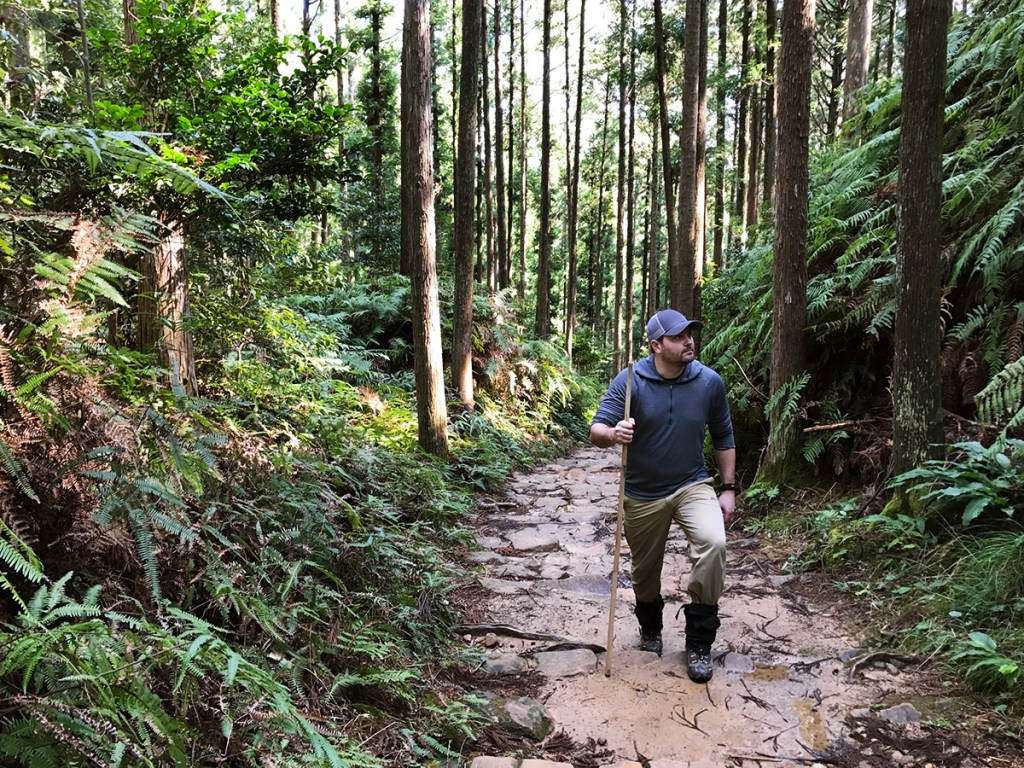
A hiker practices the art of shinrin-yoku (forest bathing) on the still-wet path of the Nakasendo Way.
For generations the natural environment in Japan has been considered by its inhabitants to be a sacred part of life. Japan’s love of nature even trickles down into the country’s medical recommendations: In 1982, the Japanese Ministry of Agriculture, Forestry and Fisheries instituted a national forest-bathing program under the term “shinrin-yoku,” which means slow walking in and among trees as a form of preventative medicine. While this feeling of respect for nature is noticeable in many parts of the country, including the big cities, it is perhaps best experienced by slowly moving through forested environments off the beaten path.
Top Hikes in Japan
Where should you go to find the best hiking options? First, consider that Japan is a volcanic archipelago divided into eight regions:
-
- Hokkaido: This is the second largest, most northern and least developed of Japan’s four main islands. On Hokkaido, you’ll find deep snow in the winter and temperate temperatures during the summer months. For this reason, Hokkaido is a popular destination for skiers and snowboarders during the winter, and for hikers, cyclists and campers during the summer.
- Tohoku: This area is known for its beautiful countryside, mountains lakes and hot springs. Hikers can catch all of the above in one hike.
- Kanto: This area contains Tokyo and Yokohama and is densely populated, so less of a go-to option for outdoors lovers seeking solitude.
- Chubu: This region is located at the center of Honshu, Japan’s largest island. The northern part of Chubu lines the Sea of Japan.
- Kinki: Also called the Kansai region, this region was historically the political and cultural center of Japan. It contains the cities of Kyoto, Osaka, Nara and Kobe.
- Chugoku: This region makes up the western part of Honshu, Japan’s largest island. It contains both urban and rural areas and partially lines the Sea of Japan.
- Shikoku: This is Japan’s fourth largest island.
- Kyushu: Japan’s third largest island contains much of the country’s history, as it was an early center of Japanese civilization.
As you’ll see below, much of the best hiking in Japan can be found in Hokkaido, which contains six national parks and dozens of peaks.
You’ll also find good hiking options on Honshu, which contains the Fuji Five Lakes Region and Mount Fuji. You can also visit Japan’s 30+ national parks throughout all of the above regions, the first of which was established in 1931. These national parks include volcanoes, marshes, beaches, coastlines and underwater marine habits, and all are open to the public.
Some of the best routes and hiking areas throughout the above regions include:
Mount Fuji
Japan’s Mount Fuji is 12,388 feet high, towering above the country and well-known for its beauty and size. It’s an active volcano and you can hike up the side of the majestic peak from July to late autumn, to avoid snow. Impressively, most hikers complete this trek in just one or two full days, but altitude sickness can be a problem, so consider following the CDC’s guidelines about how to acclimate and sleep at high altitudes. According to Japan’s tourism website, the major challenge of climbing Mount Fuji is not the incline but the altitude, as the air gets thinner the higher you climb.
Mount Fuji is divided into 10 stations, each of which offer various amenities. The first station is at the bottom of the mountain and the tenth is at the summit. Depending upon what route you choose during your trip, you may or may not pass all of the stations. If you want to stay overnight on the mountain, you’ll need to book a mountain hut in advance. An overnight stay typically costs about 7,000 yen per person, including two meals. Hikers are also asked to contribute 1,000 yen before their climb, to help the government maintain the mountain.
To get to Mount Fuji, drive two hours from Tokyo and pick from four color-coded routes up the mountain:
- Yoshida Trail: This trail is roughly 7.9 miles round-trip and takes about six hours to climb and four hours to descend. According to the official Fuji Climb website, there are many mountain huts available for the ascent but none for the descent. This route can be quite crowded, as it’s a popular way up, and it contains first-aid centers at different points during the climb.
- Subashiri Trail: This 9.9-mile round-trip requires a six hour ascent and a three hour descent. Some portions of this trail join up with the Yoshida trail, and there are no mountain huts on this route, so you cannot easily stay overnight on the mountain.
- Gotemba Trail: This 13.1-mile route requires a seven hour climb and a three hour descent. It’s steep but it’s also the least crowded option, with a few mountain huts available and no aid centers.
- Fujinomiya Trail: This loop trail takes about five hours to climb and three hours to descend, and it has many huts for overnight stops. It’s shorter than the other routes, but also very rocky and steep.
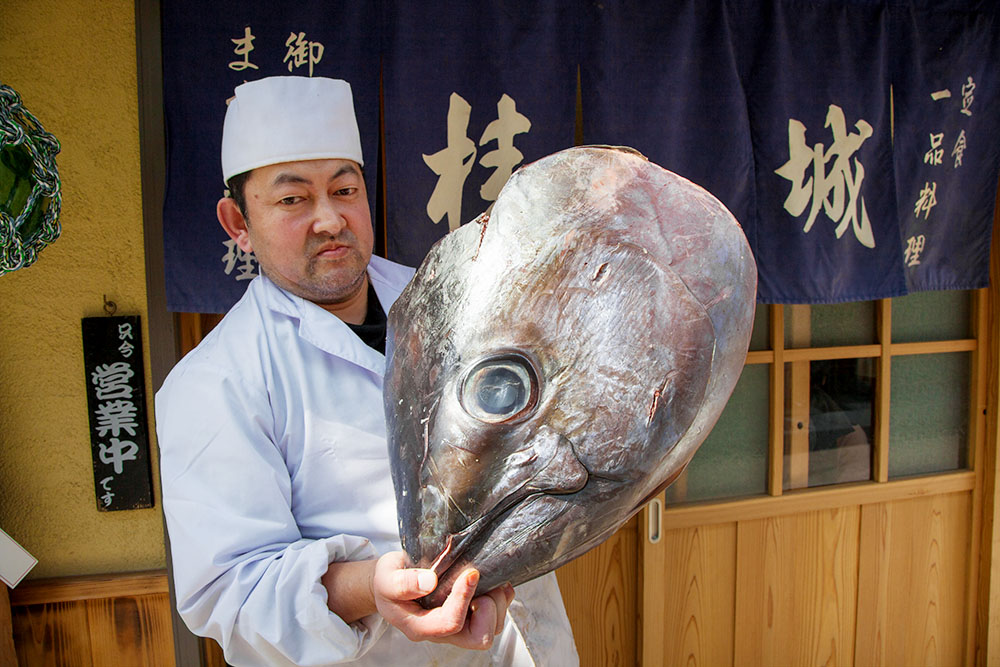
A sushi chef displays the tuna that’s on tonight’s menu.
Fuji Five Lakes
For adventurers who want the views of Mount Fuji (which is often shrouded in fog at the summit) without the climb or the crowds, the nearby Fuji Five Lakes region offers a great alternative. Fujigoko—the local name for The Fuji Five Lakes—is known as a lake resort area. Each of the five lakes (Yamanakako, Kawaguchiko, Saiko, Shojiko and Motosuko) offer unique views of the mountain, as well as dozens of options for hiking and camping.
To get to the lakes, take an express train from Tokyo. The lakes include:
-
- Yamanakako: You can camp on the banks of Yamanakako, which is also well known for its water sports, like windsurfing, boating, water skiing and fishing. Near the lake, you’ll find Oshino Hakkai, a small town with eight springs fed by underground water. (Head to Beni Fuji no Yu for great views of Mount Fuji while you soak.) This town is part of the Mount Fuji World Heritage designation area.
- Kawaguchiko: This lake is located right at the base of Mount Fuji, so you can’t always see the giant mountain. That said, the best views of Mount Fuji can be found while strolling the lake’s northern shores, which are particularly beautiful during cherry blossom season in April as well as during the fall foliage months.
- Saiko: This lake is small and undeveloped, but well known for its spectacular caves. Take a hike to the Saiko Bat Cave, a cavern that stays warm year-round, and the Narusawa Ice Caves, which stay frozen even during the summer months. This area also contains a network of hiking trails through the mountains and hills surrounding the lake and Aokigahara Jukai, an expansive forest to the south of the lake.
- Shojiko: This is the smallest of the Fuji Five Lakes and it remains largely undeveloped, making it a wonderful backcountry camping option. At times, hikes around this lake offer a near-perfect view of Mount Fuji.
- Motosuko: The westernmost of the Fuji Five Lakes contains a few campsites and very few options for public transportation, making it another lovely backcountry camping option.
Popular day hikes in the Fuji Five Lakes region include Panorama Dai (near Yamanakako), which can be reached in about 30 minutes from the Mikuniyama Hiking Course Iriguchi bus stop and offers stunning views of Mount Fuji. Koyodai Lookout and Sandokai Lookout can also be reached fairly quickly from Yamanakako. Hikers can also follow a fairly well-marked forest trail to the summit of Mount Ashiwada.
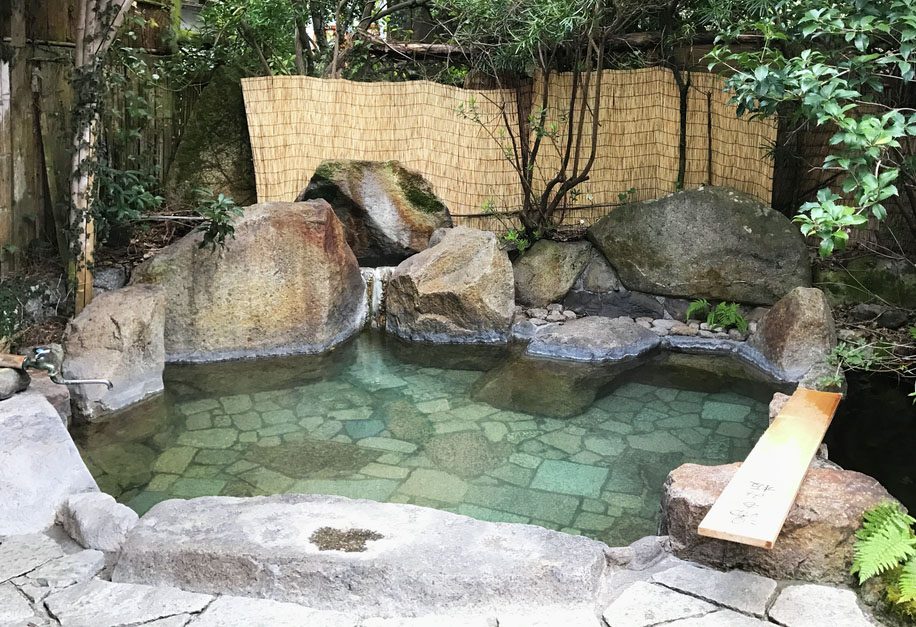
Onsen (hot springs) are common throughout Japan.
Kumano Kodo
People have been making pilgrimages to Kumano, a sacred region of healing and salvation in eastern Japan, for hundreds of years. In 2004, UNESCO designated three World Heritage sites in the Kumano region. The Kumano Kodo’s network of more than 185 miles of undulating mountainous trails connects these sacred sites.
The Nakahechi Imperial route is the most popular hiking path in the Kumano region due to the convenience of Japanese guesthouses, luggage support and train access to and from the start and end points. The complete Nakahechi route is about 44 miles and it typically takes five days, though some hikers will walk shorter segments and use buses to access their desired start and end points. The traditional route begins in Takajiri and ends in Nachisan.
While trekking on the Nakahechi Route, you’ll want to stop at The Three Grand Shrines in Kumano Sanzan, which are the main sites of worship in the Kumano region. Also look into taking a break at Yunomine, a small enclave along the Nakahechi route best known for its hot springs, or onsen. After a soak, stop at Nachi Falls, the tallest single-drop waterfall in Japan. The falls plunges 436 feet and is part of a Shinto shrine called the Kumano Nachi Taisha. Finally, climb the Daimon-zaka, a cobblestone staircase lined with ancient Japanese cedar trees; it stretches 1,968 feet in length. The staircase starts near Nachi Falls and descends to Meitosugi, or the matrimonial trees, a pair of ancient “husband and wife” cedars that have intertwined roots.
Hikers can also take the Kohechi route through Kumano Kodo, which cuts through the Kii Peninsula from north to south. This route is well known for its steep trails and it can be a very isolated experience compared to the busy nature of the Nakahechi Route. The Ohechi runs south from the Tanabe along the coast to the Fudarakusan-ji Temple. The Iseji route runs along the east coast of the Kii Peninsula and often winds between bamboo forests, mountain passes, beaches and rice fields.
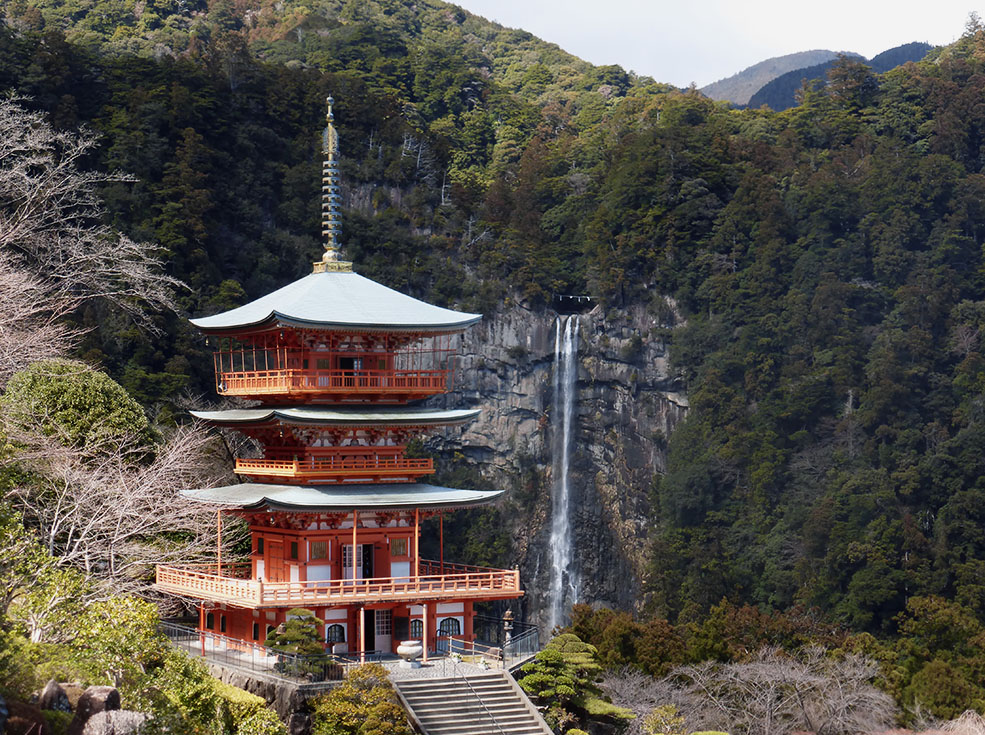
At 436 feet, Nachi Falls is Japan’s tallest single-drop waterfall and is but one of the pleasures of walking the Kumano Kodo’s Nakahechi Route.
Nakasendo Way
This old postal route connected the ancient Japanese capital of Kyoto with Edo—now called Tokyo. It’s a historic road that can be hiked in sections or in its entirety. And although Nakasendo means “through the mountains,” this route is a great choice for hikers of all stripes: Only small portions of the route are strenuous.
Most of the Nakasendo Way provides relatively easy walking on roads and wide dirt paths. The full walk typically takes 11 days and you can do it with or without a guide. Because of the length and commitment to walking the full route (329 miles), many hikers choose to walk only portions. The most popular section—Magome to Tsumago—is a 5 mile hike through Japan’s Central Alps and the Kiso Valley. The trail takes travelers through cedar and cypress woods and bamboo groves, and is accompanied by babbling mountain streams and perfectly manicured home gardens.
While on the Magome to Tsumago portion of the trek, be sure to stop at Magome-Juku, a scenic lookout point that offers an unobstructed view of the Kiso Valley. Not long after reaching the high point at Magome-toge pass, a historic Edo-period teahouse called Tateba Tea House offers weary travelers a respite from the trail. It’s also worth stopping at Odaki and Medaki Falls, which are about a mile past the teahouse.
Shikoku 88 Temple Pilgrimage Trail
The Shikoku 88 Temple Pilgrimage Trail often draws comparison to the Camino de Santiago trek in Spain. The route takes travelers to 88 temples over roughly 745 miles of trails. It’s located on the island of Shikoku and is believed to have been walked as early as the 9th century. Although many of the travelers on this route are pilgrims, hikers are also welcome.
Some travelers walk the whole route, taking several months to stop at each temple and take in every view. Others skip steps by taking public transportation for parts of the route, or by riding a bicycle between stops. For most people, this trek takes between one and two months. Because this trek has become relatively developed, travelers rarely camp out. According to the official trek website, travelers are given the option of staying in a minshuku (bed and breakfast), ryokan (an upscale bed and breakfast), hotel or a temple each night. A typical room in a bed and breakfast will cost about 7,000 yen per night. Some ryokan include soaks in local onsen (hot springs), which can bump prices up to 15,000 yen per night. You can make reservations in advance for your accommodations and will be able to do laundry or bathe at most locations.
Daisetsuzan National Park
Daisetsuzan, meaning “big snow mountain” is Japan’s largest national park, taking up nearly 888 square miles. It contains hot springs, volcanoes, lakes and forests, and is located on the island of Hokkaido. The relatively uninhabited region is known as a veritable paradise for hikers and outdoor lovers. Deer and brown bear abound (bring your bear spray) and the hike options are endless. This is the first place to see fall colors each year, as well as the first place to get snow when winter hits. Japan’s tourism website suggests staying at a hotel that contains an onsen (hot spring) around the periphery of the park, then venturing into the park for day hikes or longer backpacking trips on routes recommended by your hosts.
Popular routes through Daisetsuzan include Sounkyo Onsen Trailhead (40 miles); Asahidake Onsen Trailhead (40.8 miles); and Aisankei Onsen Trailhead (42.5 miles). These main trails connect at dozens of points and provide ample opportunities for day hikes or longer treks. See this map for more hiking options.
Yakushima Island
This subtropical island contains some of oldest living trees in Japan, many of which are over 1,000 years old and the oldest of which is estimated to be over 7,000 years old. The island is covered by dense cedar forests and offers ample hiking opportunities. You can also find lovely beaches and onsen (hot springs), scattered throughout the island.
Popular hikes on Yakushima include a visit to Shiratani Unsuikyo Ravine, a forested nature park that offers access to the country’s oldest trees, sans strenuous hiking. Most of the hikes in this area range from one to five miles long. If you’re looking for a challenge, the Tsuji Tige Pass takes you from the Shiratani Unsuikyo Ravine to the Jomonsuhi, a giant cedar tree estimated to be nearly 7,200 years old. This hike takes about 12 hours round-trip, from start to finish.
Another way to see the island is to drive the perimeter, getting out often to hike. The western coast of the island is a UNESCO World Heritage site and the roads in this area are too narrow for buses. If you visit during June or July, you may witness sea turtles laying their eggs on the island’s beaches. A few notes: Try to rent a car and get your international driver’s permit before you arrive, as buses are scarce on this island. This island can also be quite rainy, so plan accordingly when you pack.
How to Travel and Hike in Japan
The hiking trails described in this guide are rugged with rocks and tree roots and are often damp from humidity and/or rain. It would not be uncommon to fall while hiking on any of the trails described, so caution is always strongly recommended.
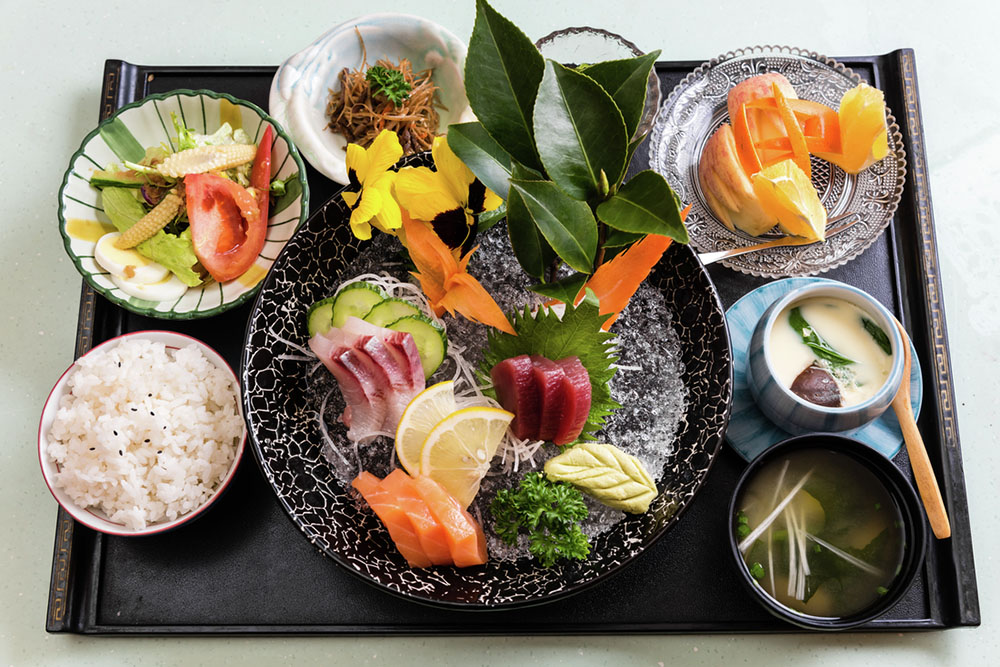
World-famous Japanese cuisine awaits at the end of each day.
What to Pack for a Japan Hiking Trip
The weather in Japan can be variable year-round, but hikers should always be prepared for rain with a light waterproof jacket and pants. Hat, sunglasses and sunscreen are always recommended. Because of the many rocky trails and cobblestone staircases, trekking poles are suggested for stability. Hikers do not need to carry much water or food as most trails have plenty of opportunities to resupply. A lightweight backpack with a small refillable hydration reservoir or reusable water bottle should be sufficient.
International Arrivals
Most international travelers fly into Tokyo or Osaka on the main island of Honshu. Narita International Airport (NRT) in Tokyo is the largest airport in Japan and is located 37 miles east of Tokyo. Haneda Airport (HND), or Tokyo International Airport primarily services domestic carriers, though international flights have recently expanded to this hub. It is located 8.7 miles south of Tokyo Station, which makes travel in and out of the city relatively easy.
Osaka is the capital city of Osaka Prefecture and is the closest large city to the Kumano Kodo. Itami Airport (ITM), or Osaka International Airport, is the main hub for international travel to Osaka, Kyoto and Kobe.
Getting Around in Japan
Traveling around Japan is relatively simple and efficient. The Japan Rail Pass, often called the JR Pass, is sold in weekly increments and can be purchased for a discounted rate online or through a certified vendor before arriving in Japan. The pass is the most affordable and most efficient way to travel and gives you unlimited access to all JR trains, including the Shinkansen bullet train, as well as some JR buses and ferries.
If ordering online, be sure to allow plenty of time for the pass to arrive in the mail to avoid overnight shipping, which may negate the discount. If you purchase ahead of time, take the paper exchange order with you to Japan and turn it in at any JR pass office for the actual Japan Rail Pass. Both the exchange order and JR Pass are paper tickets that cannot be replaced if lost or stolen.
The unlimited JR Pass was designed for foreigners on a tourist visa for visits of 90 days or less. Until recently, the pass was only sold outside of the country to block Japanese nationals from purchasing it, but for a limited time (through March 31, 2019), the pass can be purchased at Japan Rail offices in Japan, though not for the discounted rate. It is unclear if the JR Pass will be sold inside the country after this trial period.
Whether you purchase the pass at home or in Japan, you will need to present your passport and exchange order at a JR office to get the JR Pass. Once you have your pass, go to any JR office and make reservations for individual tickets. Seats can be reserved in advance or on arrival depending on availability. Trains are easy to navigate with signs and on-train announcements with English translations. Most JR stations also have useful tourism information with English speaking agents.
When to Go
Japan is a year-round destination and the best time of year to visit depends on which region you are most interested in visiting.
Hokkaido—which has plenty of national parks and hiking trails—is the most northern part of Japan and receives significant snowfall in the winter. Though it is a popular skiing destination, for hiking it’s best visited in the summer months and is most popular in July and August.
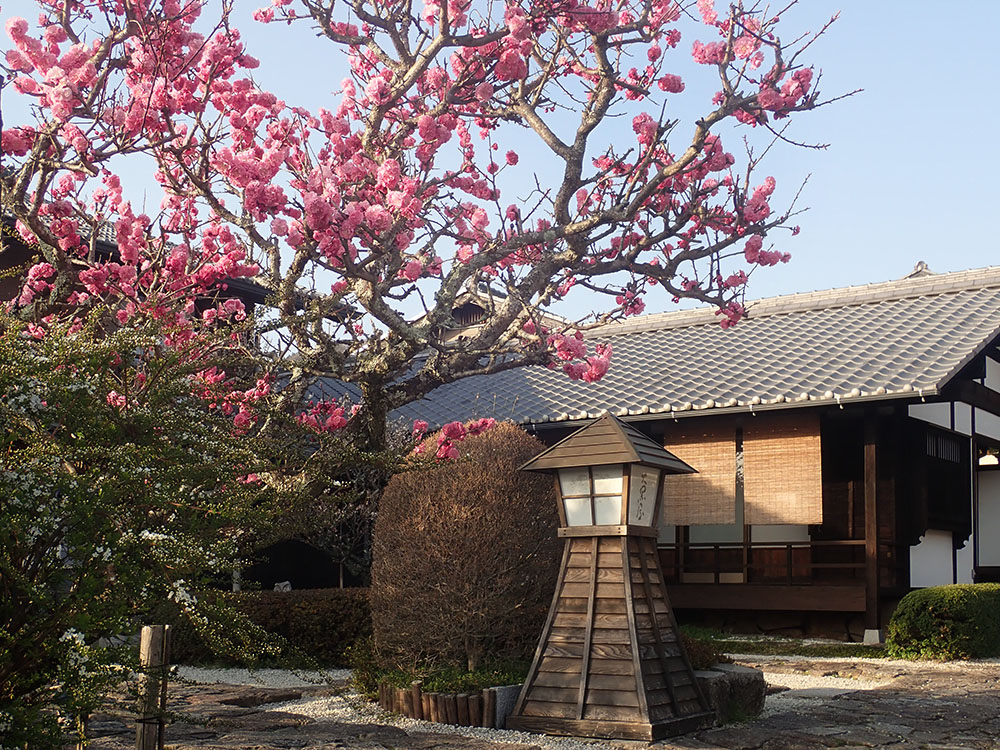
The autumnal cherry blossom makes fall an especially rewarding time to visit Japan.
Central and Southern Japan can be uncomfortably hot and humid in the summer months. Spring and fall tend to be the most moderate for hiking and offer the added beauty of cherry blossom season and fall colors. Daytime temperatures in Honshu average in the mid-60s to mid-80s Fahrenheit. April to June and September to October tend to be the most reliable and moderate weather for both the Nakasendo Way and the Kumano Kodo; however, Japan can get rain and snow during any month of the year, especially in the mountainous areas.
Where to Stay
Tokyo, Osaka and Kyoto have plenty of accommodations ranging from budget to luxury and make great places to explore for a few days before (or after) going on one of the recommended multiday treks. Pod hotels, which are like enclosed bunk beds and operate similar to a hostel, are popular among young travelers and anyone looking for an inexpensive, minimalist place to sleep for a night or two. Additionally, all major cities have a wide selection of Western-style hotel chains and can be booked on most online travel sites.
Traditional Japanese guesthouses, called ryokan, are a recommended experience and tend to be available in a range of price points. Guesthouses in smaller, off-the-beaten-path areas require reservations at least a week in advance. Meals are often included. Japanese Guesthouses online booking seems to be the best way for English-speaking travelers to reserve traditional accommodations. Though many hosts do not speak English, it’s rarely a challenge.
(This guide was collaboratively written by Monica Prelle and Jenni Gritters)
